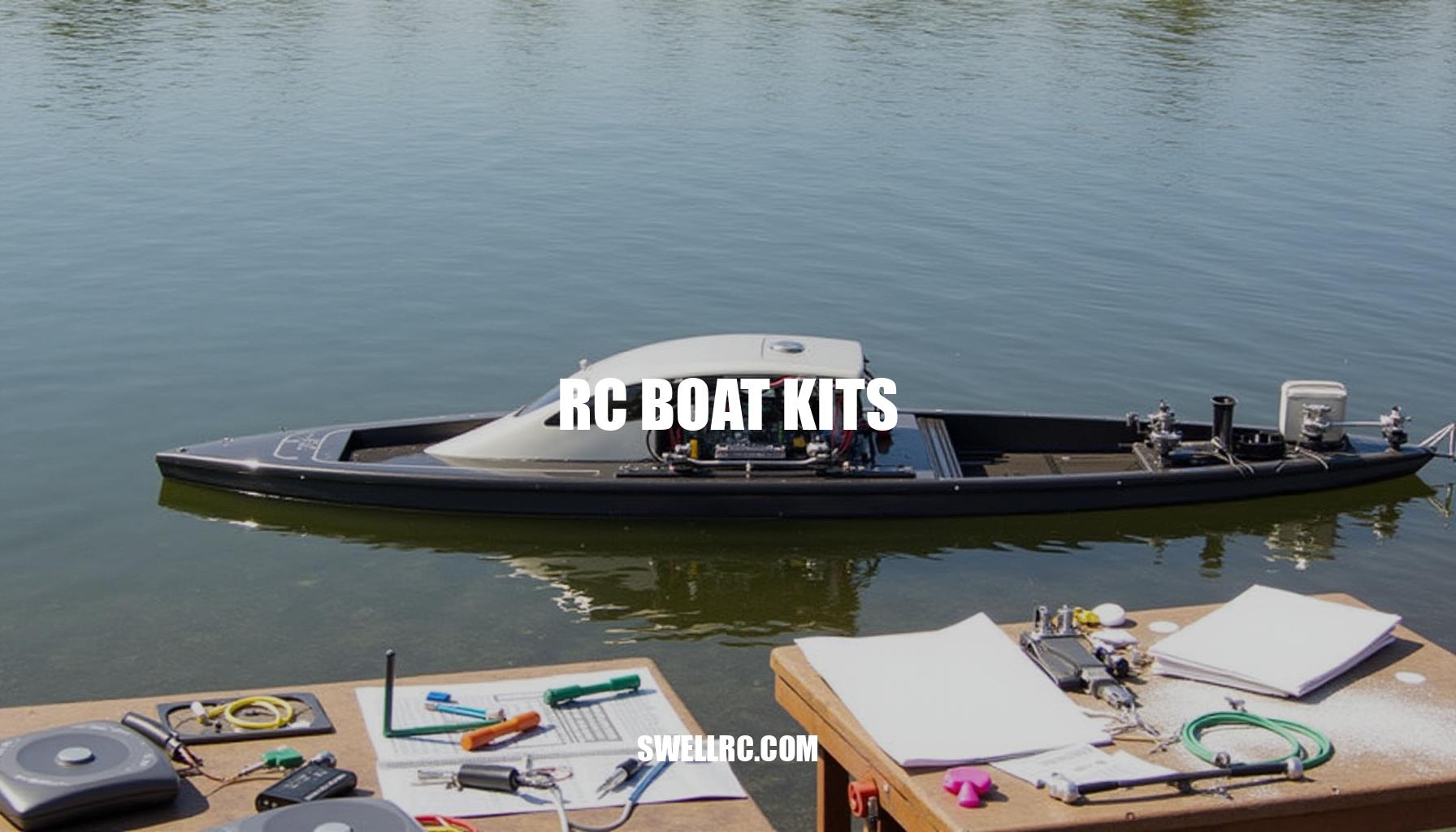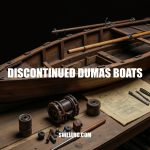RC Boat Kits: A Beginner’s Guide to Building and Racing Radio Controlled Boats
It started on a windless Saturday, standing at the edge of a glassy pond with a borrowed transmitter. One gentle throttle blip and the little deep‑V carved a silver line across the water—and I was hooked. Radio controlled boats introduced me to an exciting world of model boat kits that transformed that initial spark into a full‑blown passion.
The intoxicating smell of epoxy, the thrill of the first brushless motor spool-up, and the quiet pride of launching something you built with your own hands are unmatched sensations within the RC hobby. In this guide, I’ll unpack everything I’ve learned about remote control crafts—from the various types of radio controlled boats and the materials that truly matter, to the choice between electric vs. gas powerplants.
We’ll also explore build complexity, the importance of waterproof electronics, essential maintenance tips, and smart upgrades that can enhance your experience. Whether you’re diving into DIY RC boat building for the first time or looking to refine your skills, understanding these elements will help you choose, build, and enjoy your perfect scale model ships and water toys with confidence.
Understanding RC Boat Kits: What Makes Them So Addictive?
An RC boat kit offers the essential components—hull, hardware, power system, steering (servo + rudder), and radio gear (receiver/transmitter)—and invites hobbyists to dive into the exciting parts: assembling, customizing, and tuning. These kits cover the entire spectrum of remote control crafts, from sleek racing boat kits to detailed scale model ships and specialized models like electric deep-Vs, sails, hydroplanes, outriggers, and even propeller-driven airboats that glide effortlessly over shallows.
Sail and scale: Enthusiasts who appreciate graceful control and realism will enjoy radio-controlled sailboat kits, which promise long, peaceful runs and develop skills in wind reading and trim.
Pure speed: RC hydroplane boat kits are the perfect choice for adrenaline seekers as these craft explode off the line and skim on air cushions, delivering unparalleled velocity and precision.
Shallows and weeds: When venturing into marshes, shallow waters, or even light snow, RC airboat kits provide the go-anywhere fun that other model boat kits can’t match.
Advanced structure: RC outrigger boat kits utilize sponsons for stability at high speeds, rewarding those who master precise setup and value fierce competition.
Across these various types, you’ll encounter essential components such as brushless motor RC boats powered by advanced brushless motors and ESCs for electric builds, or tuned pipes and carburetors for gas models, plus waterproof servos, links, struts, and turn fins. Entry-level kits often come with pre-drilled hulls and ARF/ARR options to simplify building, while advanced kits offer raw fiberglass, ABS, or wood for the rewarding challenge of crafting every detail yourself.
| Type | Difficulty | Cost | Speed | Runtime | Joy |
|---|---|---|---|---|---|
| Sailboat | Beginner–Intermediate | $–$$ | n/a | Hours | Calm, skillful trimming |
| Electric Deep-V/Mono | Beginner–Intermediate | $$ | 20–50+ mph | 8–20 min | Versatile, forgiving |
| Hydroplane | Intermediate–Advanced | $$–$$$ | 60+ mph | 6–12 min | Adrenaline, precision |
| Outrigger | Advanced | $$–$$$ | 70+ mph | 6–12 min | Ultimate racing focus |
| Airboat | Beginner–Intermediate | $–$$ | 25–40 mph | 10–20 min | Go-anywhere fun |
| Scale Ship | Intermediate | $$–$$$ | 10–20 mph | 30–120+ min | Detail, realism |
Whether you’re drawn to the thrill of high-speed hydroplanes, the precision and stability of an RC outrigger, or the realism and detail of scale model ships, the diverse selection of model boat kits ensures there’s a perfect fit for every enthusiast. Dive into the world of remote control crafts and enjoy the hands-on fun of assembling your ideal RC boat kit.
My Deep Dive: Testing, Failing, and Finally Mastering the Build
I started my journey in DIY RC boat building with a 28‑inch electric deep‑V on 3S LiPo, pairing a simple hardware setup with a 30 mm prop and a waterproofed radio box. Early on, neglecting to test the hatch seal taught me a crucial lesson about waterproofing electronics; two laps in, water ingress forced me to bail. Thankfully, applying silicone grease on the gasket and a strip of hatch tape fixed the problem instantly—proof that in brushless motor RC boats, waterproof electronics are a non-negotiable priority.
Next, I upgraded to a 26cc gas-powered mono hull. The addictive torque was exhilarating, yet I spent a week chasing porpoising until I shifted the LiPo batteries 15 mm forward to stabilize the ride. My final build, a wood-framed hydroplane, demanded patience and precision.
Aligning the strut and sponsons to a hair’s breadth separated smooth, stable lift from chaotic tank-slappers.
| Boat Type | Top Speed (mph) |
|---|---|
| Electric Deep-V (3S LiPo) | 38 |
| Gas-Powered Mono (26cc) | 52 |
| Wood-Framed Hydroplane | 63+ |
When seeking a proven, competitive platform, I turned to Zippkits RC. Their racing boat kits feature well-cut parts, smart hardware, and setups that mirror what fast club racers run, easing setup challenges like ESC tuning and prop optimization.
Five Lessons I Wish I Knew Before My First Build
- Seal first, run second—water finds every gap. Proper waterproofing of electronics including ESCs and receivers is critical, especially for brushless motor RC boats exposed to splashing.
- CG is king: Start with the center of gravity positioned 28–33% from the transom for monos, then fine-tune placement of LiPo batteries and components to maintain balance during speed testing and running.
- Prop choice changes everything: Diameter, pitch, and cup influence throttle curves and overall performance; matching props to motor kV and boat type is vital.
- Don’t over-motor: Match motor kV, LiPo battery cell count, prop specifications, ESC current rating, and ensure adequate cooling to avoid overheating and ensure reliability.
- One change at a time: Test, log data, and repeat—fine tuning your setup yields the best racing performance rather than guessing multiple changes at once.
Choosing the Right RC Boat Kit: The Smart Buyer’s Blueprint
Starting with the purpose of your RC boat is essential to choosing the right technology, whether it’s for cruising realism, club racing, backyard fun, or learning builds. Selecting the appropriate power source—electric, gas/nitro, or sail—will determine your experience and performance. Electric systems, typically brushless motors powered by LiPo batteries, offer clean operation, quick launches, and are especially beginner‑friendly due to their low maintenance and quiet performance.
Gas engines replicate real-world power and provide longer runtimes and striking presence on big waters, though they require more tuning and upkeep analogous to tuning engines in gas-powered RC truck kits. Sailboats, relying on wind, offer minimal maintenance and extended sessions of peaceful, beautiful control.
Material choices for the hull impact durability, weight, and customization level. ABS plastic suits easier builds, fiberglass lends strength and lasting durability, wood such as balsa or plywood achieves lightness and is ideal for custom shaping, while carbon fiber offers high stiffness for competitive racing. Consider your budget holistically: account not only for the kit price but also for tools, adhesives, batteries or fuel, chargers, and spare parts.
Additionally, think about maintenance — how much time you want to invest in cleaning, sealing, and tuning your boat to keep it in optimal shape.
When it comes to electric vs gas vs sail, the differences are notable. Below is a comparison table that highlights their key attributes:
| Power Source | Cost | Complexity | Runtime | Maintenance | Noise | Speed | Best For |
|---|---|---|---|---|---|---|---|
| Electric | $$ | Low–Med | 8–20 min | Low | Very low | 20–70+ mph | Ponds, lakes |
| Gas | $$–$$$ | Med–High | 20–45+ min | Med–High | High | 40–80+ mph | Large lakes |
| Sail | $–$$ | Med (rigging) | Hours | Low | None | Wind‑limited | Any calm water |
For those curious about best RC boat kits for beginners, opting for a 24–30 inch electric deep‑V or mono hull with a waterproof radio bay is advisable, or alternatively a mid‑size sailboat with simplified rigging. Model boat kits designed for novices usually feature pre-drilled hulls and detailed step-by-step manuals, making assembly approachable, though advanced wood kits or racing builds demand more tools and patience.
Understanding maintenance tips for RC boats can prolong your investment: waterproofing is critical—seal hatch gaskets, epoxy-coat wood interiors, apply dielectric grease on connectors, and consider conformal coating for electronics like receivers and ESCs. For saltwater use, thoroughly rinse with fresh water, dry completely, oil metal parts, and aggressively protect electronics to prevent corrosion.
Electric vs gas RC boats boils down to your preferences and environment. Electric boats are cleaner, quieter, and easier to maintain but have limited runtime. Gas boats provide immersive sound and longer water time yet require attentive tuning and higher maintenance.
Lastly, always choose from reputable RC boat manufacturers who offer consistent hulls, reliable hardware, and active support communities—valuable traits for spare parts availability and guidance throughout your hobby experience. Specialized RC retailers and trusted brands remain your best sources for buying quality kits and parts.
Beyond Boats: Expanding Your RC Hobby Horizons
Building boats sharpened my fundamentals in the RC hobby—mastering aspects like radio setup, power‑to‑weight ratio, center of gravity, and clean linkages. These essentials translated directly to flying remote control crafts. After a season on the water, I ventured into precision aerobatics using rc pattern plane kits, which honed my control and maneuvering skills.
Following that, I developed patience and fine-tuned my setups with rc balsa glider kits, learning the art of trimming for optimal performance. Later, I immersed myself deeper into the study of structures and covering via rc model airplane kits, gaining hands-on experience with design and build quality.
The overlap between these disciplines is profound: both aerodynamics and hydrodynamics reward smooth thrust lines, balanced control surfaces, and efficient low-drag setups. This skill transfer enhances understanding and performance across different remote control crafts.
Interestingly, practicing smooth elevator inputs in the air improved my throttle discipline on the water, resulting in noticeably better lap times.
Maintenance, Modifications, and Long-Term Joy
Your boat will treat you as well as you treat it, so following a thorough maintenance routine is essential. Implementing a pre- and post-run checklist helps ensure reliability and peak performance. Before each run, check hatch seals, battery straps, prop and nut tightness, rudder linkages, cooling line flow, receiver failsafe, and perform a range test.
After running, unplug LiPo batteries, drain the hull, dry it with a towel or air, inspect for water ingress, oil metal parts, and store the hull open to breathe.
Effective waterproof electronics strategies are vital for longevity. Epoxy-seal wood interiors, fit silicone hatch gaskets, tape high-speed hatches, apply dielectric grease on servo leads, and conformal-coat receivers and ESCs when needed. Incorporate buoyant foam inside the hull so mishaps result in floating instead of sinking.
When considering brushless motor upgrades, start by enhancing the propeller with a balanced, sharpened design of slightly smaller diameter before altering pitch. Transitioning to an efficient brushless motor and ESC combo is a game-changer; match the motor’s kV rating to your battery voltage, and make sure cooling lines and ESC ratings are adequate to prevent overheating.
Propeller tuning and handling adjustments can drastically improve your RC boat’s responsiveness. Adjust the center of gravity (CG), and strut height and angle; add turn fins or use sharpened rudders to increase corner bite.
For quick reference on common RC boat issues and their fixes, see the table below:
| Issue | Recommended Fix |
|---|---|
| Porpoising | Shift CG forward 5–10 mm; lower strut slightly |
| Cavitation / Sputter | Balance propeller; reduce prop height; check for air leaks in cooling or pickup |
| Overheating ESC / Motor | Downsize prop; improve water cooling; verify timing and ESC rating |
| Water in Hull | Improve hatch seal and tape; inspect transom hardware and hose barbs |
| Radio Glitches | Route antenna away from carbon and metal; secure all connections; add a ferrite ring if needed |
| Rudder Flutter | Tighten linkage; add a servo saver; check servo torque specifications |
| Short Runtime | Use fresh, correct-sized packs; reduce prop load; ensure alignment minimizes drag |
Adhering to these maintenance tips for RC boats not only extends your model’s lifespan but also maximizes enjoyment and performance on the water.
Conclusion: The Endless Waters Ahead
From that first ripple to your first perfect pass, model boat kits offer a unique blend of craftsmanship, problem‑solving, and pure speed. Embracing the RC hobby means more than just assembling parts—it’s about immersing yourself in the art of DIY RC boat building. Choose wisely among various radio controlled boats, build patiently to ensure every detail is perfect, test methodically for peak performance, and enjoy the pride that comes with a boat reflecting your hands and your style.
Whether you gravitate toward quiet sails at sunset or the howl of a tuned pipe at full chat, there’s always:
- Another setup to try,
- A racing line to refine, and
- A new stretch of water waiting.
Racing boat kits open the door to thrilling competitions, while leisurely cruises on your radio controlled boats connect you to the serene beauty of the water. Each journey in DIY RC boat building enriches your skills and deepens your passion for this captivating RC hobby. See you at the shore, transmitter in hand!
Frequently Asked Questions
- What are the best RC boat kits for beginners?
A 24–30 inch electric deep‑V/mono with a waterproof radio bay and modest brushless setup, or a mid‑size sailboat with simple rigging. They’re forgiving, easy to transport, and have clear build steps. - Are RC boat kits hard to assemble?
Beginner kits are straightforward with pre‑drilled hulls and step‑by‑step manuals. Advanced wood, hydro, or outrigger kits require more tools, alignment work, and patience. - How fast can RC boats go?
Sport electrics typically hit 20–50 mph. Well‑built hydroplanes and outriggers, properly tuned, can exceed 60–80+ mph. - What materials are used in high-quality RC boat kits?
Fiberglass for strength and finish, ABS for easy assembly, balsa/plywood for lightweight custom builds, and carbon fiber for high‑end stiffness and weight savings. - How do you waterproof an RC boat?
Seal hatch gaskets, tape high‑speed hatches, epoxy‑coat wood interiors, use dielectric grease on connectors, and consider conformal coating on receivers/ESCs. - What’s the difference between electric and gas-powered RC boats?
Electric is cleaner, quieter, and simpler with brushless motors and LiPos. Gas delivers longer run times, more vibration and noise, and requires tuning and more maintenance. - Can RC boats be used in saltwater?
Yes, but rinse with fresh water immediately after, dry thoroughly, oil metal parts, protect electronics, and check for corrosion regularly. - Where can I buy reliable RC boat kits online?
Choose specialized RC retailers and reputable manufacturers with active communities, spare parts availability, and clear documentation for hassle‑free ownership.



